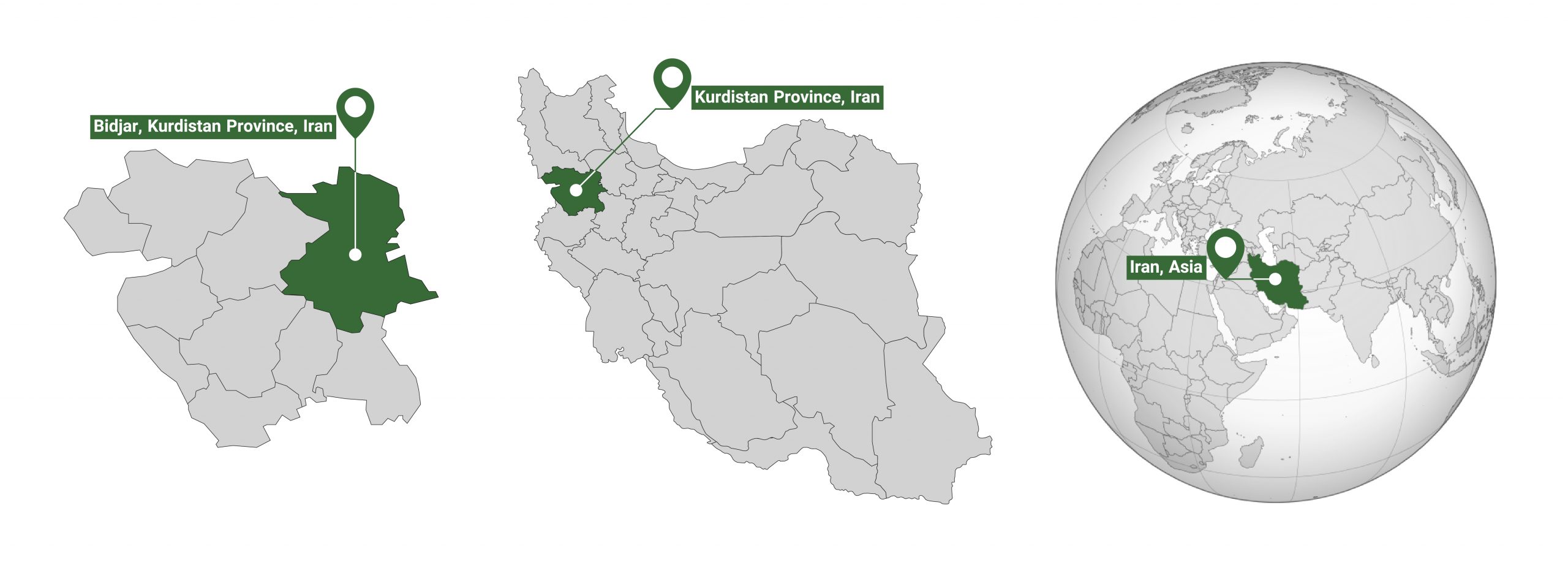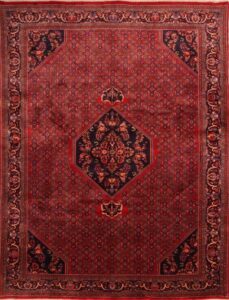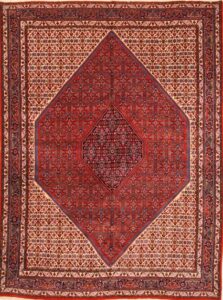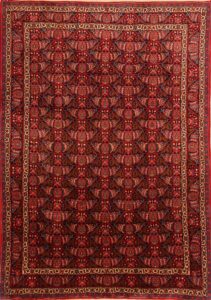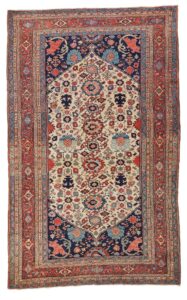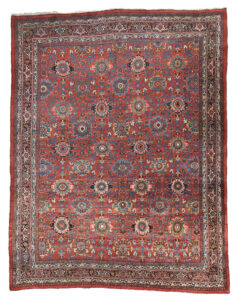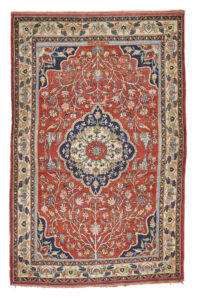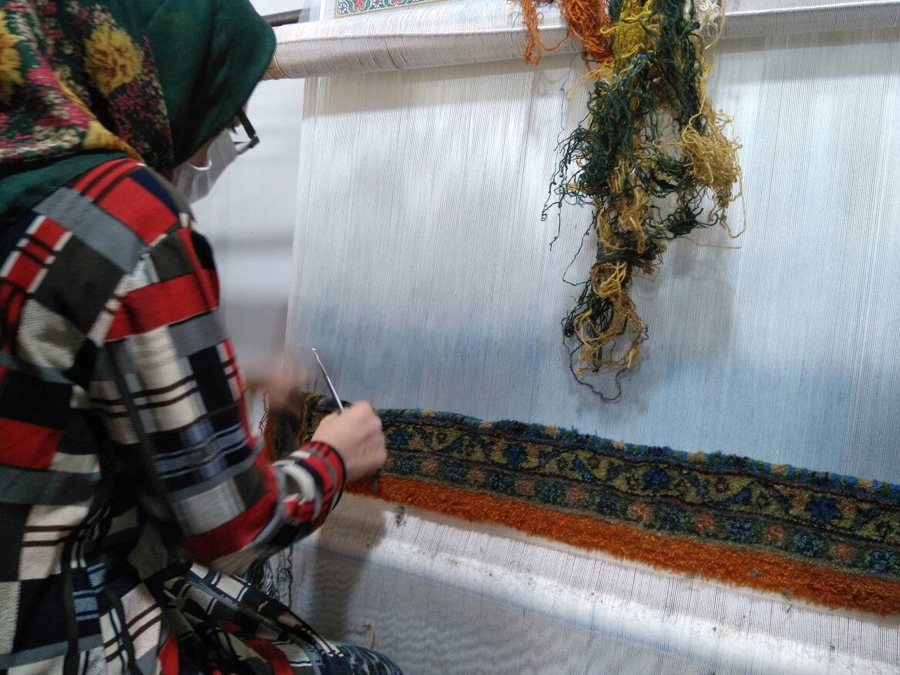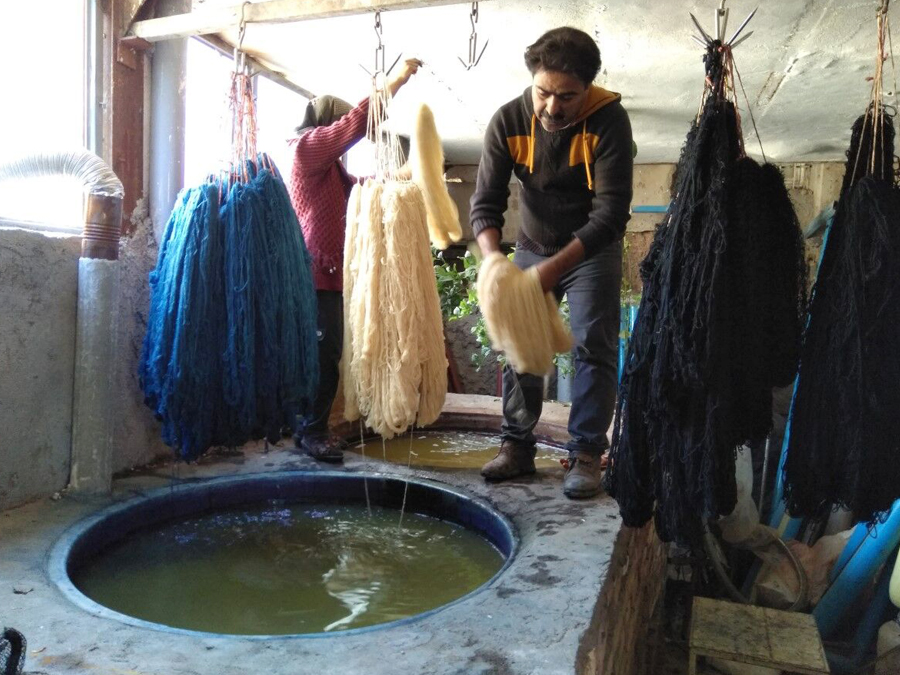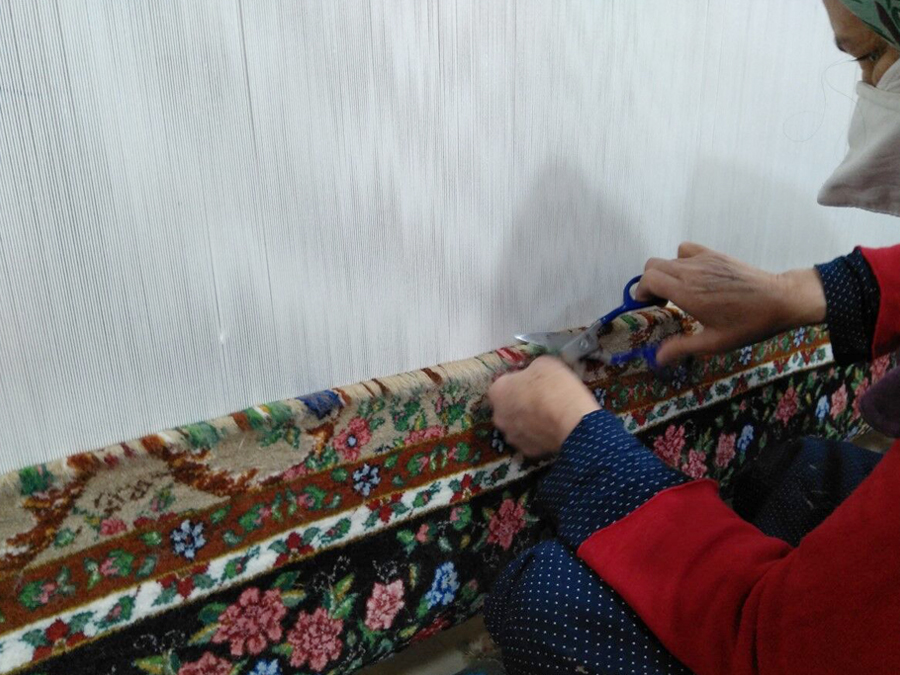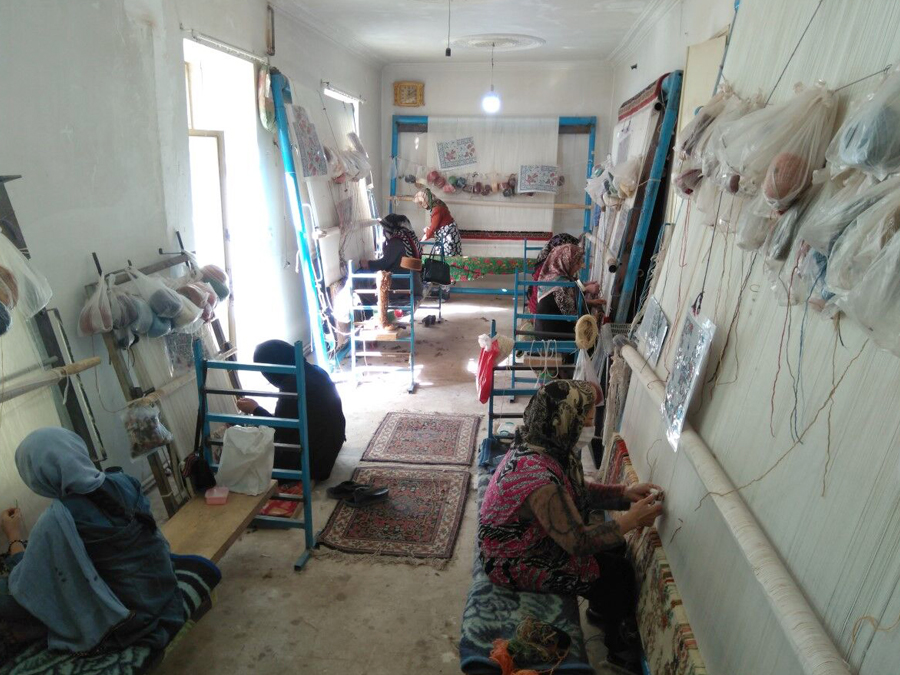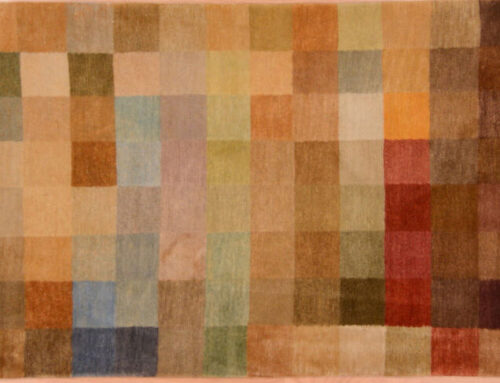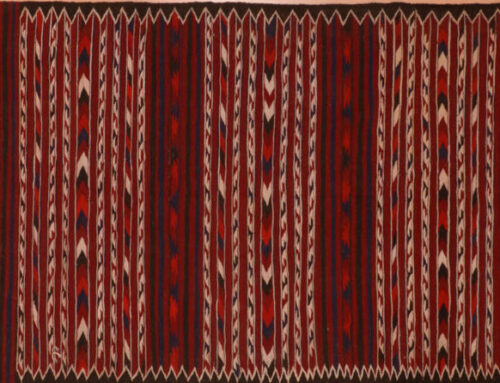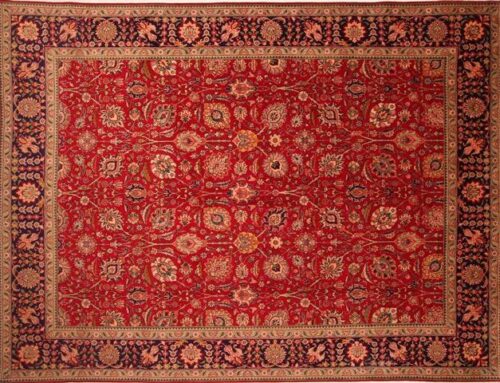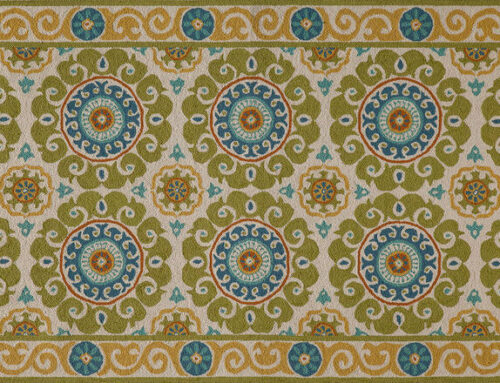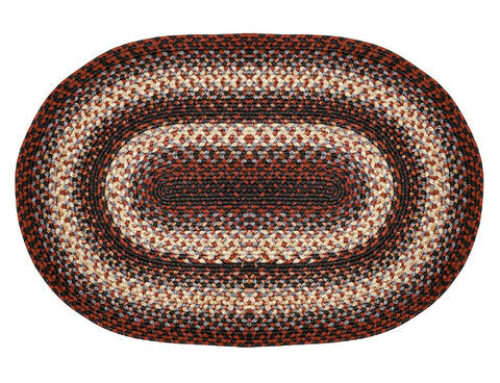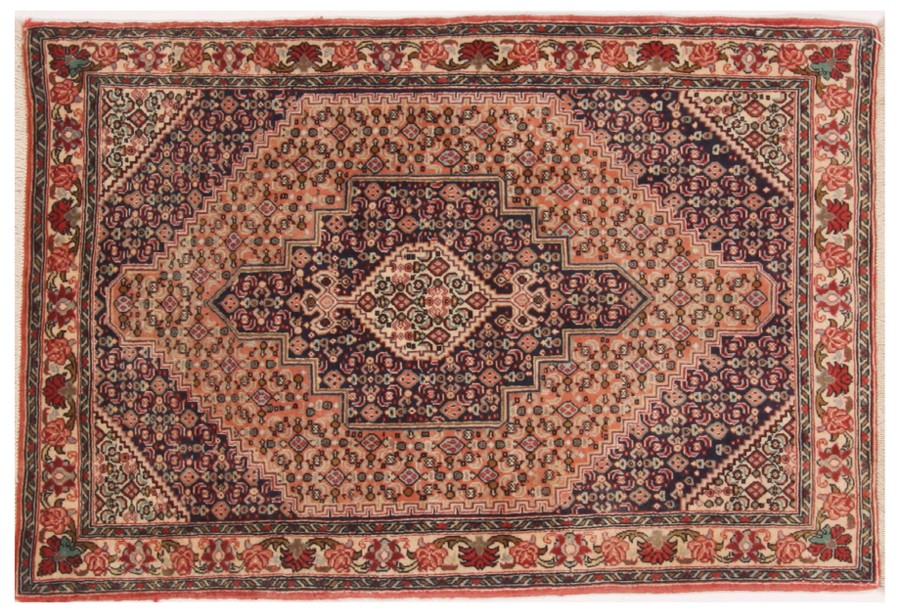
Origin of Bidjar Rugs
Bidjar rugs are made in and around the city of Bidjar, which is located in the province of Kurdistan, bordering the province of Zanjan – which is why many people consider Bijar rugs to be from the Province of Zanjan. This geographical proximity has resulted in a great similarity between the Bidjar and Zanjan rugs, particularly in the neighboring areas between the two provinces.
History of Bidjar Rugs
Kurdish carpets are woven throughout western Iran, in and around the rugged mountainous region of Kurdistan. The Kurds derive from the ancient nomadic peoples that roamed the area thousands of years ago. They live a semi-nomadic life, either in villages or in moving tribes away from the cities, where they can still carry out their old traditions and live as they did thousands of years ago. A few of the Kurdish tribes of the western regions include the Herki, Senjabi, Gurani, Jaffid, and Kalhors.
A few major Kurdish rug-producing centers are Senneh, Bidjar, and the district of Khamseh. Some other Kurdish villages and districts that produce rugs are Borchelu, Goltogh, Khoi, Koliai, Lilihan, Mosul, Nanadj, Sonqor, Touserkan, and Zagheh.
As you can see, the Kurds are well established, and historic semi-nomadic and/or nomadic peoples of Iran who date back thousands of years. Many other major rug producing centers of Iran, such as Hamedan, Lorestan, or even Arak show obvious traces of Kurdish influence. Sometimes they incorporate the style and techniques of the Turkish people of Iran, who are also very widespread.The Kurds are a very peaceful and gentle group who prefer their simple nomadic lives to the complexities and frustrations of the modern technological world.
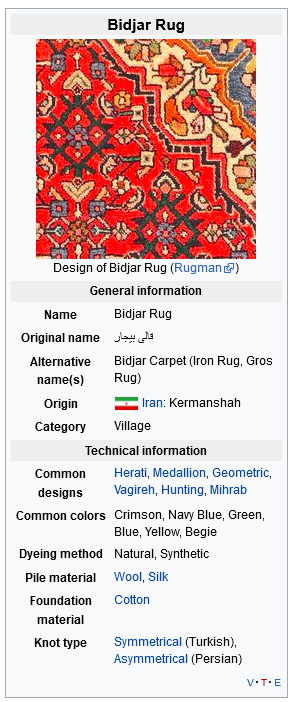
Bidjar Rug Infobox | © WikiRug
Perhaps the toughest and most durable rug on the face of the earth, the Bidjar does more than just look pretty. These hand-woven Persian rugs are made by Kurdish people in Northwestern Iran in the town of Bidjar. Bidjars are highly esteemed for their pile thickness, structural strength, and great weight. They are often imitated but never duplicated because no other region uses the wet loom technique that the particular makers of this rug use. The wet loom technique is constantly keeping the wool, warp, and weft wet during the long process of weaving, so the materials temporarily shrink to allow tighter weaving, then expand when the rug is complete and dry to make the piece very dense and strong. The peaceful friendly people of Bidjar have managed in recent times to earn one of the richest and most enviable reputations in all of Asia for their highly prized beautiful carpets.
The earliest Bidjar area rugs that have found their way to the collection of American and European rug collectors as well as international museums, dating back as early as 1266 H.G. Muslim calendar. Bidjar rugs are among the popular rugs in United States and Canada because they are easy to match with many different kinds of home settings and very warm rugs. Bidjars not only go well with antique or traditional furniture, they also complement modern and contemporary settings as well. Never will they seem overpowering or overwhelming to the rest of the room. Because of their incredible durability, these rugs are ideal for high traffic areas such as a main foyer or kitchen, but they also look astounding in a living or dining room.
Characteristics of Bidjar Rugs
Bidjar hand knotted area rugs are called the Iron Rug of Persia. They are beautiful, and are unquestionably the most durable hand knotted rug of all handmade rugs in the world. Although they are thick and are very heavy duty rugs, they are intricate in terms of the design and are very tightly knotted. They are most appropriated in cold weather and keep your feet warm, particularly where there is stone or ceramic on the floor. Bidjar rugs normally have a central medallion that fit very nicely both traditional and contemporary environment.
Most Bidjar rugs are woven by people from the region of Garrous, a name some people use to call Bidjar rugs. Finer weave of Bidjar rugs are woven by Afshar weavers who live near the city of Tekab in the province of Kurdistan.
Bidjar rugs is one of the widest categories of the hand knotted Persian carpets and is woven from a decorative size of one square feet all the way to the large sizes as big as 14×20. However, because Bidjar rugs are really heavy they normally are not made larger than 14×20 unless for a custom made rugs that are not supposed to be moved very often. Bidjar rugs are made in round, octagon and hexagon shapes as well as the most common shapes of rectangular and square. Unlike most people in the western world who like faded and muted colors, the Kurds love bright lively colors. These exciting rugs bring life to these simple people’s dull homes. All Kurdish rugs are rugged and long lasting as they have proved to be for thousands of years.
Bidjar rugs are made of wool and sometimes mix of wool and silk pile on a cotton base. The quality of the bidjar wool is also a very fine because it comes from the same region that is weaved and has one of the finest wools in the entire Persia.
-
Material and Knots
Kurdish rugs, like all other Persian rugs are all 100% handmade. They are made of pure wool which is spun from the weaver’s own sheep. In very rare cases you might find a carpet that has silk in the pile, and you will often see the foundation of Kurdish rugs being made of goat hair. The pile however, is always wool. The weaving quality in Kurdish rugs varies from loose to dense knotting and the Persian asymmetrical knot is used more than the Turkish symmetrical knot.
Bidjar rugs are weaved with the tightest knots ever in a hand knotted rug. However, the size of the thread are not normally the finest comparing to some other fine rugs. Hitting with heavy steel combs push knots tighter together and that’s why a lot of wool is used in Bidjar rugs, making it more valuable and durable. A Bidjar knot, if well cared for, could easily last over one hundred years under heavy usage, provided it is protected from humidity and moth.
-
Color
The colors are attained mainly from natural vegetable dyes. The color schemes of most Kurdish rugs are bright and vibrant.
The Dye used in Bidjar rugs, in the past was totally vegetable and natural dye, madder roots are what produced the pleasant red that tends towards copper color. However at the present synthetics dye also may have been used in dyeing the Bidjar rug wool. Nevertheless, the good news is that still many Bidjar rugs are made by vegetable dye particularly the pleasant red may be from Ronas (madder roots).
-
Design and Pattern
The Bidjars either have an all over pattern inside of the main border, but more often than that a large centered diamond medallion is seen. The most famous designs used in Bidjar handmade carpets from Iran are Islimi, Dahan ajdar, Golfarang, Shah Abbasi, Robeidar and gol, Mahi, Mixed Mahi, Afshar Mahi, and Mirak Mahi. Some of the most famous contemporary Bidjar Rug designers are Master Aliasghar Lak, and Godratullah Gichloo.

